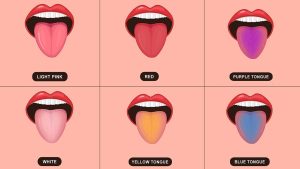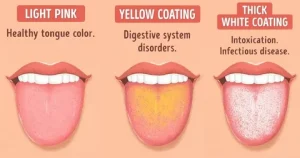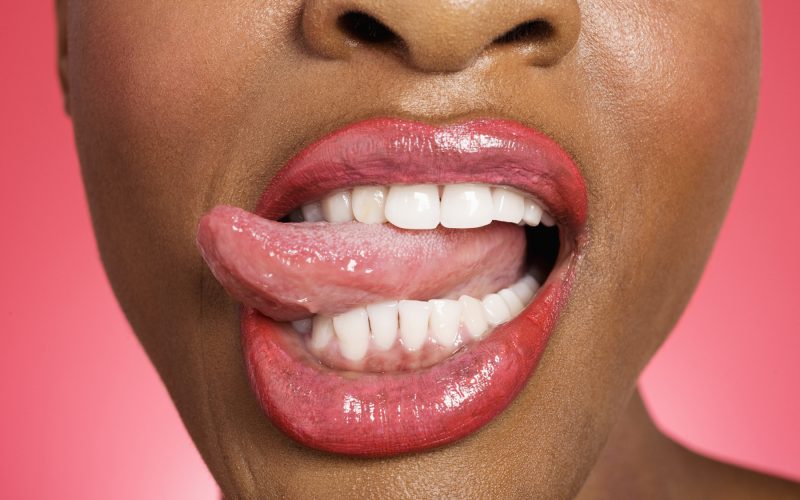Introduction
In the realm of health and wellness, the body often communicates its state through various signs and symptoms. One such indicator that has been utilized for centuries is the color of the tongue. While it may seem like a minor detail, the color variations of the tongue can provide valuable insights into one’s overall well-being. Understanding these shades can be instrumental in identifying potential health issues and taking proactive measures to maintain optimal health.
The Significance of Tongue Color
The tongue serves as a mirror reflecting the internal state of the body. Changes in its color can signify underlying imbalances or conditions. By observing the color of the tongue, healthcare professionals and individuals alike can gather essential information about potential health concerns.
| Tongue Color | Indication |
|---|---|
| Pale | Nutrient deficiency, anemia |
| Red | Heat, inflammation |
| Purple/Bluish | Poor circulation, cardiovascular or respiratory issues |
| White Coating | Bacterial accumulation, poor oral hygiene, digestive issues |
| Yellow Coating | Excess heat, dehydration, jaundice, gallbladder issues |
| Black Hairy | Elongated papillae, bacterial accumulation, poor oral hygiene, tobacco use, excessive caffeine consumption |

Pale Tongue
A pale tongue often indicates a deficiency in vital nutrients, particularly iron or vitamin B12. Anemia, a condition characterized by low red blood cell count, can manifest as a pale or whitish tongue. Addressing nutritional deficiencies through dietary adjustments or supplements can help restore a healthy tongue color.
Red Tongue
A red or bright pink tongue may suggest heat or inflammation within the body. This could be due to a variety of factors, including infections, fever, or excessive heat in the body. Additionally, a red tongue accompanied by a yellow coating may indicate excessive heat combined with dampness, according to traditional Chinese medicine principles.
Purple or Bluish Tongue
A purple or bluish hue on the tongue may indicate poor circulation or stagnation of blood. In some cases, it may be a sign of cardiovascular issues or respiratory problems. Individuals with a purple tongue should seek medical evaluation to rule out underlying health conditions.
White Coating
A white coating on the tongue is a common indication of an accumulation of bacteria, dead cells, and debris. It can be a sign of poor oral hygiene or digestive issues such as candidiasis, commonly known as oral thrush. Improving oral hygiene practices and addressing any underlying digestive issues can help eliminate the white coating and restore the tongue’s natural color.
Yellow Coating
A yellow coating on the tongue may signify excess heat or inflammation in the body. It can also be a sign of dehydration or digestive disorders such as jaundice or gallbladder issues. Individuals with a yellow-coated tongue should hydrate adequately and consult with a healthcare professional to determine the underlying cause.
Black Hairy Tongue
While less common, a black hairy tongue is characterized by a dark discoloration and a furry appearance on the tongue’s surface. This condition occurs when the papillae on the tongue become elongated and trap bacteria and debris, resulting in discoloration. Poor oral hygiene, tobacco use, certain medications, and excessive coffee or tea consumption can contribute to the development of a black hairy tongue.

Interpreting Tongue Color Variations
Understanding the nuances of tongue color variations requires a holistic approach that considers individual health history, lifestyle factors, and cultural context. While tongue color can provide valuable insights, it is essential to interpret these signs within the broader context of an individual’s health profile.
Consulting with Healthcare Professionals
For accurate diagnosis and personalized guidance, individuals experiencing persistent changes in tongue color should consult with healthcare professionals. A thorough examination, including a review of medical history and possibly diagnostic tests, can help identify the underlying causes of tongue discoloration. Explore (Health And Fitness)
Maintaining Overall Wellness
In addition to monitoring tongue color, maintaining overall wellness is paramount for optimal health. This includes adopting a balanced diet rich in nutrients, staying hydrated, practicing good oral hygiene, managing stress, and engaging in regular physical activity. By prioritizing self-care and preventive measures, individuals can support their body’s natural balance and reduce the risk of developing health issues.

Incorporating Traditional Healing Practices
In many cultures, traditional healing practices offer valuable insights into maintaining health and well-being. Practices such as traditional Chinese medicine, Ayurveda, and indigenous healing modalities often emphasize the interconnectedness of body, mind, and spirit. Incorporating elements of these holistic approaches, such as herbal remedies, acupuncture, or meditation, can complement conventional healthcare practices and promote overall wellness.
Conclusion
The color of the tongue serves as a dynamic indicator of one’s health status, offering valuable clues about potential imbalances or underlying health conditions. By understanding the various shades of wellness and interpreting tongue color variations, individuals can take proactive steps to maintain optimal health and well-being. From addressing nutritional deficiencies to embracing holistic healing practices, prioritizing self-care and preventive measures is key to achieving lasting vitality. Remember, the journey to wellness begins with attentive self-awareness and a commitment to nurturing the body, mind, and spirit.










